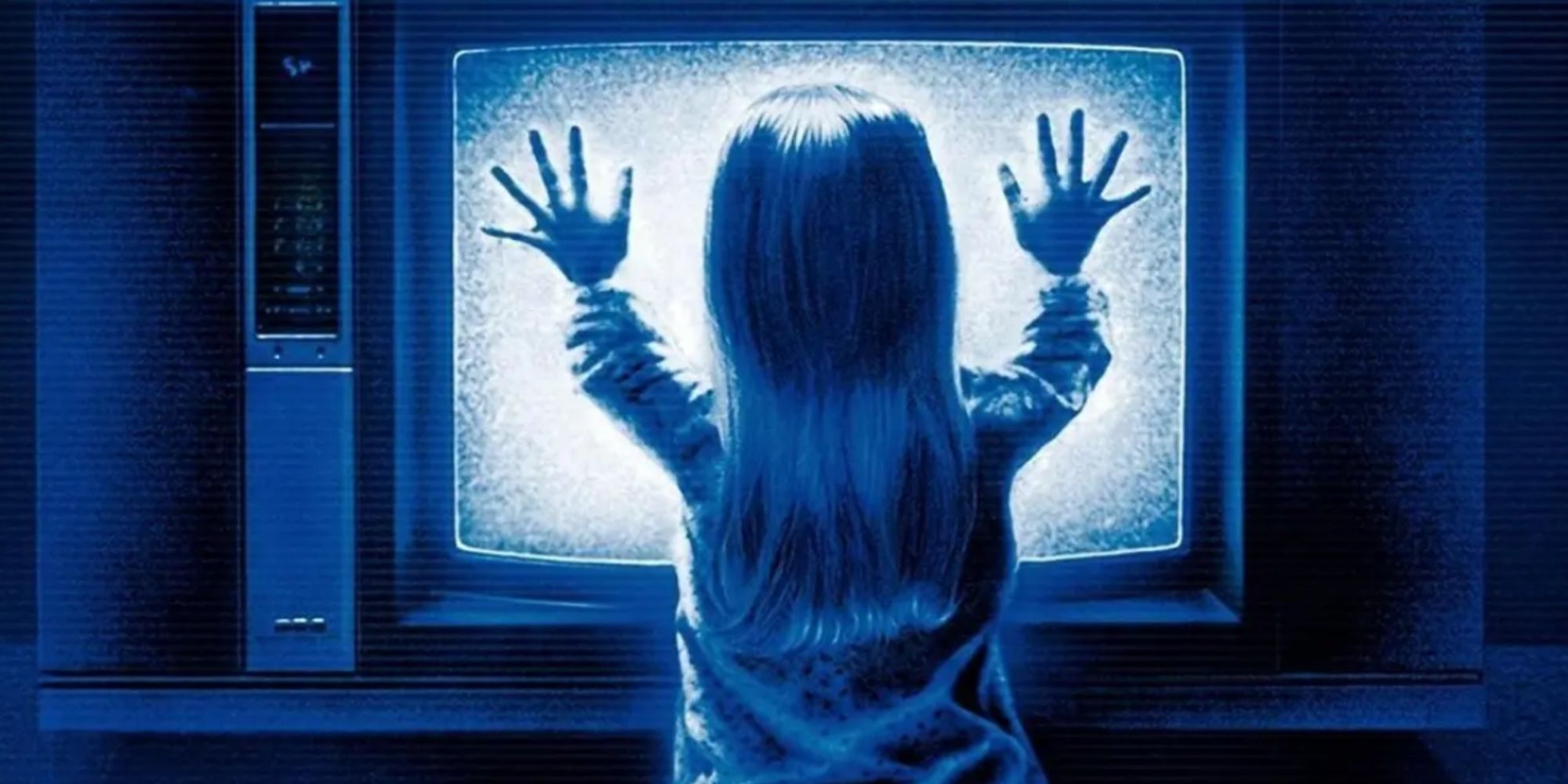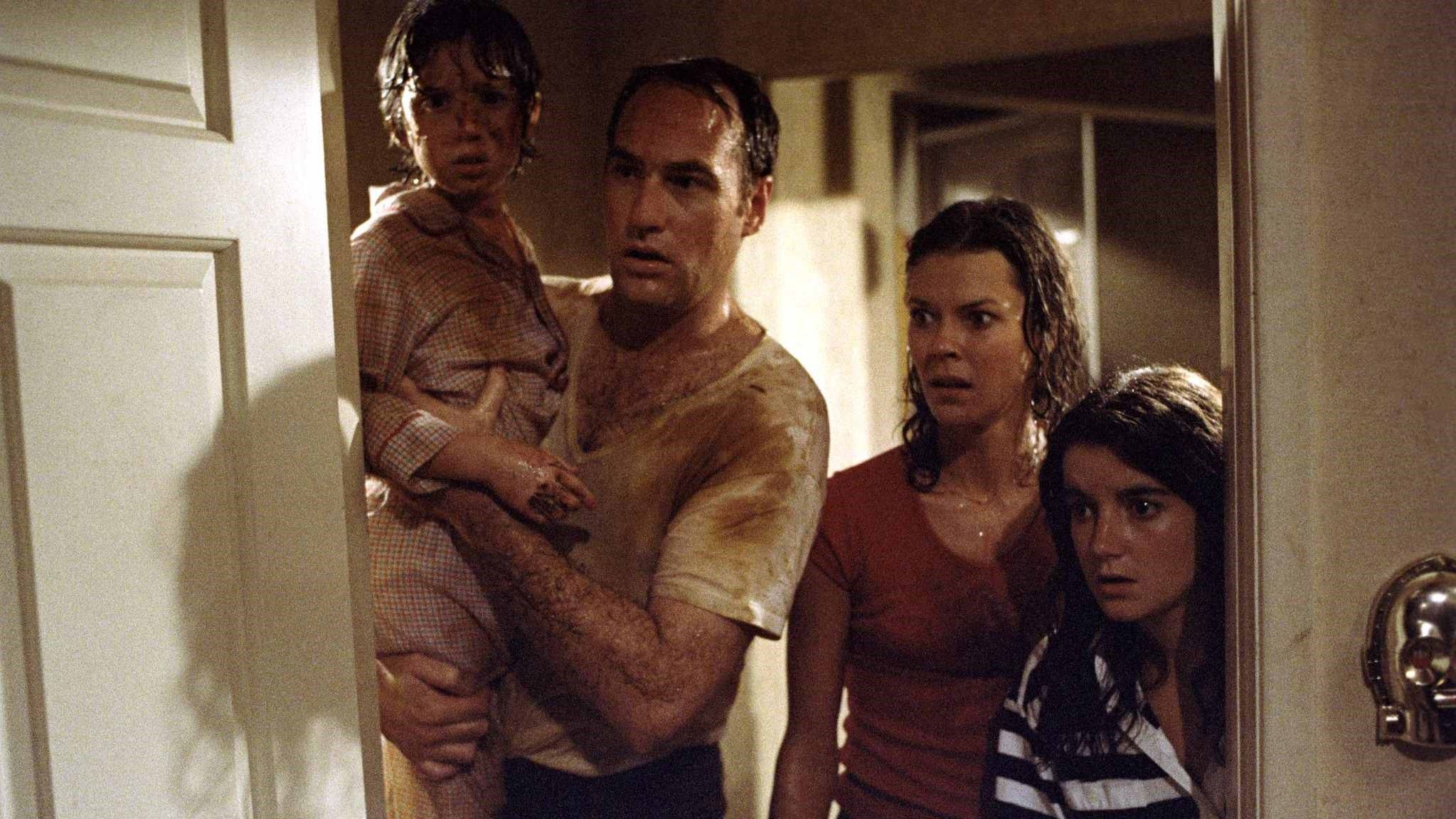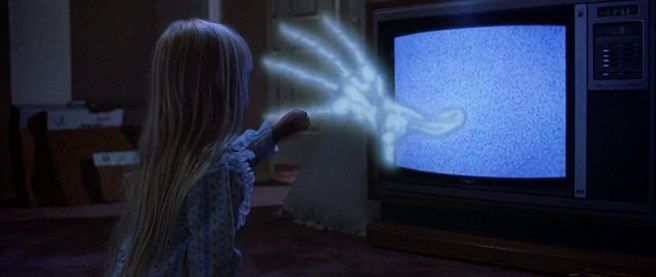In 1982, Steven Spielberg was at the beginning of an incredible run of movies that would inspire a generation of filmmakers. In 1981, Spielberg directed Raiders of the Lost Ark with Harrison Ford, starting a franchise of films that are still a part of popular culture today. A year later he would direct the seminal childhood movie, E.T. the Extra Terrestrial, a movie about the power of friendship in suburban America. While he was working on E.T, Spielberg was part of a different kind of suburbia movie. In 1982, Spielberg chose Tobe Hooper, the director of The Texas Chainsaw Massacre to helm a ghost story of a different kind, Poltergeist.
The film’s legacy some 40 years later is often wrapped up in controversy. Due to the tragic deaths of young actresses Dominque Dunne and Heather O’Rourke, the film often gets lost to Hollywood superstition. Poltergeist also has mystery surrounding its true authorship. While Hooper is the director by credit, many speculate that because of his daily involvement in production, it was Spielberg himself who directed the film, essentially at the same time he was making E.T. This idea is an interesting one when you closely examine the legacy of Poltergeist, 40 years later. While E.T. demonstrates the idyllic side of suburbia, Poltergeist demonstrates its darker side.
Poltergeist is the story ghosts invading the home of the “average” American 1980s family. Steve (Craig T. Nelson) and Darlene Freeling (JoBeth Williams) are doing their best to be good parents to their children, Dana (Dominque Dunne), Robbie (Oliver Robins) and Carol Anne (Heather O’Rourke). The film opens with the playing of the American national anthem and scenes of their picturesque neighborhood. This odd beginning sets the tone for the rest of the film; while things on the surface may appear to look perfectly fine, there is a deep-rooted problem that is waiting to surface. Ironically, it looks as though the Freelings could be next door neighbors to Elliot and Gertie, but instead of a friendly alien, the Freelings are invaded by evil spirits.
After 40 years and with the advances in technology, the ghosts themselves, while still scary, do not hold up to today’s standards. However, for today’s audience, the true terror of the ghosts is the idea that they represent: technology invading the home and forever altering the life of the once happy family. One of the ways the film sets this up is by showing the Freeling family doing normal everyday things. The audience becomes attached to them as people and as characters, making their turmoil in the house more significant. We see the family eating and joking around with each other. They genuinely appear happy and when they are threatened by the ghosts the audience feels as if their own home is being invaded.
The modern family of 2022 is inundated with technology, and this has made our lives more convenient, but our lives are now also about finding a balance so that we can look up at the world we are living in, which can be difficult for many. For the Freeling family, the screen that they are attached to is their television screen. Moreover, it is that screen that is the conduit for the ghosts to attack the family. With the television flickering bluish gray, Carol Anne moves closer to it with the curiosity only a child can have, when suddenly a ghost’s arm pops out of the screen. As the house shakes at the invasion of the evil spirits, Carol Anne turns, almost facing the camera, and tells us the iconic line, “They’re here.”
The now famous line can be looked at differently nowadays. What Carol Anne and the family don’t realize is that “they” have in fact been there the whole time, and the television screen attacking them has a deeper meaning. As the ghosts go from seemingly harmless movements around the house, chairs moving on their own, to physically attacking the family, we can look at this as technology coming into our lives at first to benefit us, but ultimately, it has the power to separate us. It is very much a subversive take on a common science fiction element found in modern programming like Black Mirror.
Later in the film, Carol Anne and Robbie are attacked by a tree that is possessed by one of the house's evils spirits. The tree attack is frightening because it is a child’s worst nightmare come to life. Tucked inside your bed, the idea of a something knocking on your window and breaking through is a common fear come to life. The tree attack further shows how the ghosts invading the household is representative of a total decay of suburbia. The beginning of the film’s happy shots of the neighborhood are juxtaposed with the neighborhood coming into the house and becoming a threat to the children. The safety of the house is compromised in a way that is startling; if we are not safe in our own rooms, where are we safe?
Poltergeist was intended to be Steven Spielberg’s ghost story; a look at what happens when the family is infiltrated by a malevolent force. Now, 40 years later, the film should be celebrated for its cerebral take on how a family can be threatened by the growing influence of technology.
Furthermore, what makes Poltergeist such a good ghost story is that it allows its audience to feel safe in a quiet neighborhood. Only then does it decide to pull the rug out from underneath the pleasantries of suburban life and expose it for what is truly buried underneath the house.



